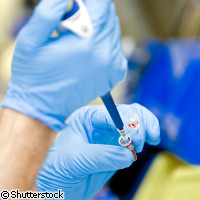Stem cell study may provide cancer clues
EU-funded scientists have gathered new information on adult stem cells (SCs) that show great promise for improving our understanding of cancer and age-related health issues. The team has discovered novel characteristics behind the way these cells respond to DNA (deoxyribonucleic acid) damage. For hair follicle SCs specifically, the study revealed that they are remarkably resistant to cell death induced by this type of damage. Results from the study are published in the journal Nature Cell Biology. The research was conducted by a team led by Peggy Sotiropoulou and Aurélie Candi working at the Cédric Blanpain Lab of the Interdisciplinary Research Institute (IRIBHM) at the Université Libre de Bruxelles (ULB) in Belgium. Their work was supported in part by a Starting Independent Researcher Grant totalling EUR 1.6 million from the European Research Council (ERC), awarded to Dr Blanpain for CANCERSTEM ('Stem cells in epithelial cancer initiation and growth'), a project funded under the Ideas Theme of the EU's Seventh Framework Programme (FP7). The role of adult SCs is to regenerate and repair tissue, replacing damaged or dead cells with new ones. Since these cells inhabit adult tissues for long periods of time, they have a greater chance of accumulating the mutations that lead to cancer formation. The ability to preserve tissue integrity following DNA damage is critical to ensuring tissue turnover and avoiding diseases such as cancer. In their paper, the scientists explain that little is generally known about how adult SCs sense and respond to DNA damage within their natural niche. Using mouse epidermis as a model and a variety of techniques (including biochemical characterisation and transcriptional profiling of isolated stem cells before and after DNA damage), the team identified the cellular and molecular mechanisms responsible for novel characteristics of hair follicle SCs. Their study specifically demonstrated that, following DNA damage, these cells are protected from apoptosis (programmed cell death). 'If you think about evolution, this protecting mechanism [makes] a lot of sense,' said Ms Sotiropoulou, first author of the study. 'Several centuries ago, ageing and cancer was not a concern in humans since the mean longevity was about 30 years old. It was much more important to protect the stem cells from cell death than avoiding new mutations in their genome.' Ms Sotiropoulou and her colleagues found that two significant molecular mechanisms contribute to hair follicle SCs' extremely high resistance to DNA damage. Firstly, they showed greater levels of the anti-apoptotic protein bcl-2, which counterbalances the effect of pro-apoptotic genes induced by this type of damage. Secondly, the other important mechanism for the higher resistance is mediated by the temporal activation of p53, the so-called 'guardian of the genome', one of the most important cancer-related genes. The scientists hope that further studies will determine whether these characteristics are shared by different types of adult SCs and not just hair follicle SCs.
Countries
Belgium



